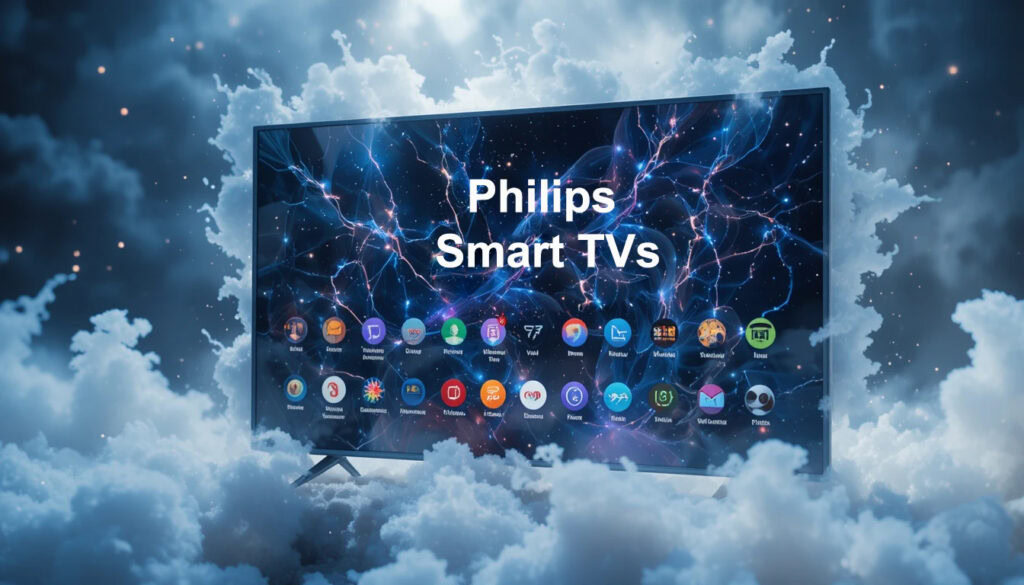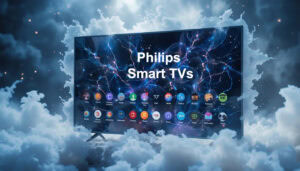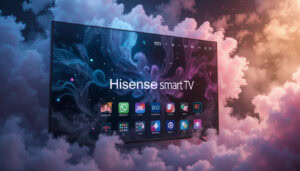Table of Contents
Finding Excellence: A Guide to Today’s Leading Philips Smart TVs
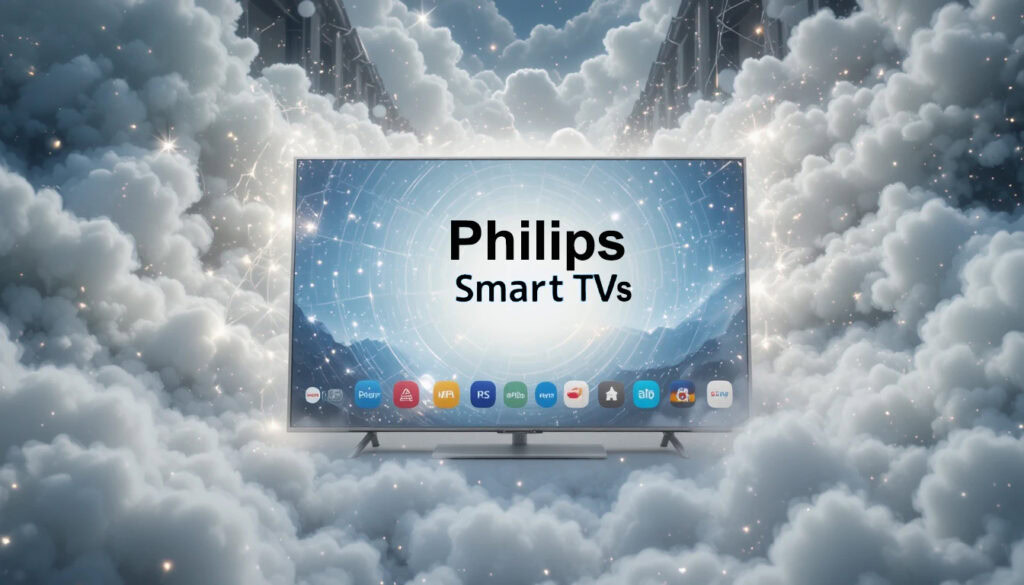
Credit: iken3
Philips has built a reputation in television manufacturing that spans decades. The brand blends European design heritage with modern display technology, creating screens that balance picture quality with ambient lighting innovation. Their position in the global market remains solid, particularly in regions where consumers value both performance and aesthetic integration.
Philips Smart TVs vs Key Competitors
| Smart TV Brands | Key Strengths and Market Position |
|---|---|
| Philips | Unique Ambilight technology, strong European presence, excellent OLED and Mini-LED options with competitive pricing |
| LG | Industry-leading OLED panels, webOS platform, extensive size range, strong gaming features |
| Samsung | QLED and QD-OLED technology, Tizen OS, premium design, excellent brightness levels |
| Sony | Superior motion processing, Google TV, accurate color reproduction, premium audio integration |
| TCL | Budget-friendly options, Mini-LED technology, Roku or Google TV platforms, good value proposition |
| Xiaomi | Deliver outstanding value for the cost, cutting-edge features, and a diverse selection of screen technologies |
| Hisense | Competitive pricing, ULED technology, diverse size options, improving picture quality |
| Panasonic | Professional color accuracy, filmmaker-endorsed processing, strong in European markets |
Philips Smart TVs serve users who appreciate immersive viewing environments through the signature Ambilight feature. The brand appeals to movie enthusiasts seeking cinema-quality displays, gamers demanding low latency and high refresh rates, and design-conscious buyers who value how a television integrates into living spaces. From entry-level OLED models to flagship displays with premium audio systems, Philips Smart TVs can accommodate different priorities.
This guide examines a lineup of six notable Philips Smart TVs. The PUS9000 “The One” QLED delivers quantum dot color at accessible prices. The OLED760 provides true OLED black levels with modern smart features. The MLED950 Mini-LED brings local dimming precision to larger screens. The OLED810 balances mid-range pricing with advanced processing. The OLED+910 combines elite panel technology with Bowers & Wilkins audio. The OLED+950 represents the pinnacle, pairing dual-engine processing with next-generation OLED brightness. Each serves distinct viewing needs and budget considerations.
1. Philips Smart TVs: Philips PUS9000 “The One” QLED for Value Seekers
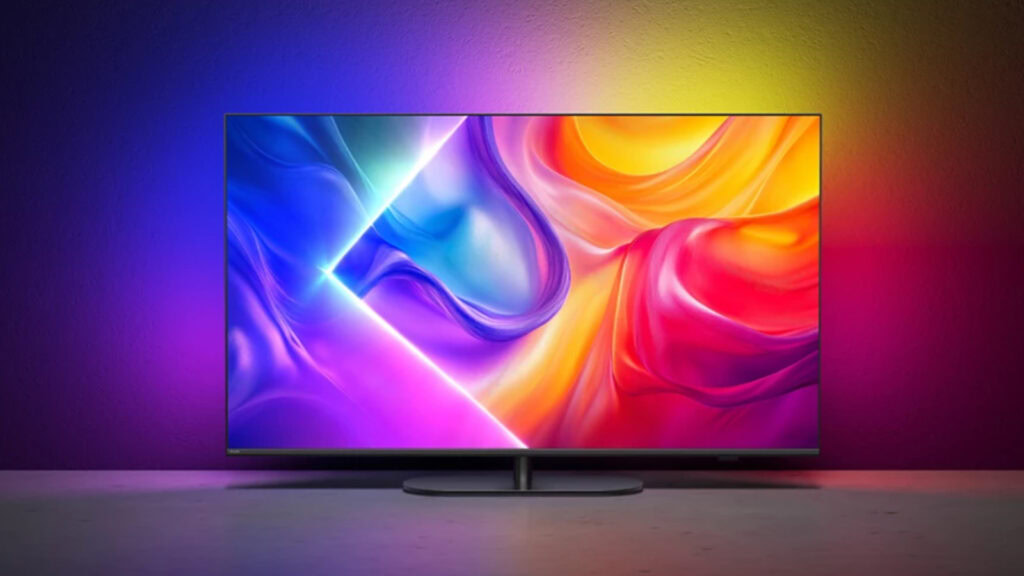
Credit: Philips
The PUS9000 represents Philips’ effort to bring quantum dot technology to a broader audience. This series, branded as “The One,” aims to provide enhanced color reproduction without requiring the investment typically associated with premium displays. Available in six sizes from 43 to 85 inches, it accommodates various room dimensions and viewing distances. The integration of QLED technology marks a step forward for this value-oriented line, promising wider color gamuts than conventional LED panels.
Major Specifications
| Specification | Details |
|---|---|
| Processor / Chipset | P5 Gen 7 AI with Adaptive Intelligence |
| Operating System | Titan OS 2025 |
| Display | 43″, 50″, 55″, 65″, 75″, 85″ – 4K QLED with Quantum Dots |
| Refresh Rate | 144Hz (100Hz native) |
| HDR Support | HDR10, HDR10+, HLG |
| Audio | 20W 2.0 (43″), 40W 4.0 (50″-65″), 50W 2.1 (75″-85″) with Intellisound, DTS:X, Dolby Atmos |
| Ports | 4x HDMI 2.1 (48Gbps, supports 4K/120Hz, VRR, ALLM), 2x USB (1x USB 3.0), Ethernet, Optical out, 3.5mm audio |
| Connectivity | Wi-Fi, Bluetooth, AirPlay 2, Chromecast built-in |
| Smart Features | Titan OS, Google Assistant, Alexa compatibility, Moments app, streaming apps (Netflix, Prime Video, Disney+, YouTube) |
| Gaming Features | FreeSync Premium, VRR, ALLM, Game Bar 2.0, Blacknut and Boosteroid cloud gaming |
User Type Recommendation: Who Should Buy It?
| User Type | Is This Smart TV a Good Fit? | Why? |
|---|---|---|
| Movie & Series Lovers | ✅ | Quantum dot color enhances vibrancy, HDR10+ support |
| Gamers | ✅ | Four HDMI 2.1 ports, 144Hz support, low input lag |
| Families & Home Users | ✅ | Straightforward navigation, wide app support, multiple sizes |
| Sports Fans | ✅ | 144Hz refresh rate keeps fast action smooth |
| Tech Enthusiasts | ⚠️ | Good features for price, lacks higher-end processing |
Quick Pros & Cons Table
| Pros | Cons |
|---|---|
| ✅ Four full-bandwidth HDMI 2.1 ports | ❌ No local dimming zones limit contrast control |
| ✅ 144Hz support benefits gaming | ❌ Titan OS app ecosystem smaller than Google TV |
| ✅ Three-sided Ambilight immersion | ❌ Global dimming only means less precise backlight control |
| ✅ Competitive pricing for QLED technology | ❌ P5 Gen 7 less capable than latest Gen 9 processor |
2. Philips Smart TVs: Philips OLED760 — Entry-Level OLED with Practical Features
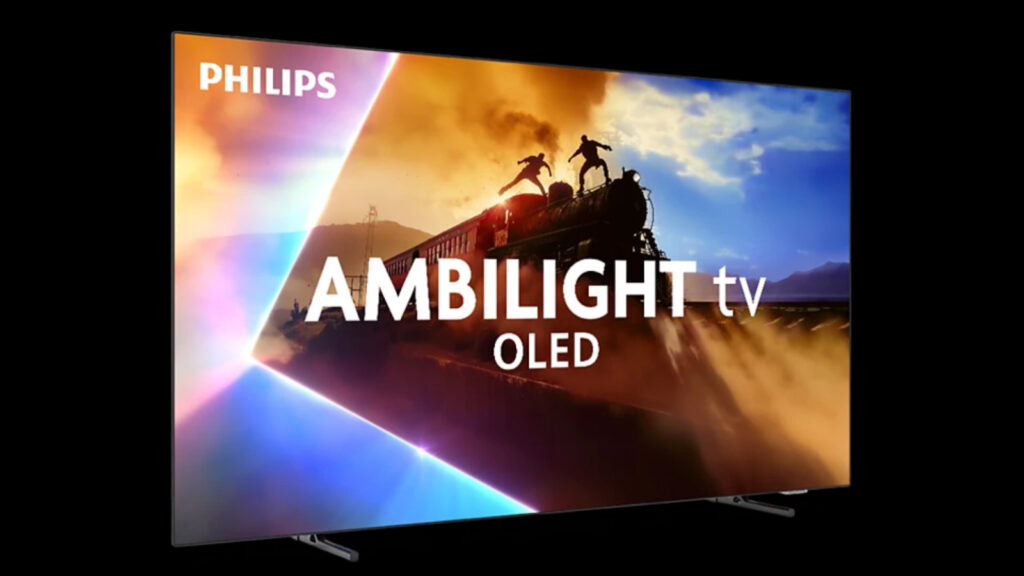
Credit: Philips
The OLED760 serves as Philips’ accessible entry point into OLED technology. This model prioritizes delivering the fundamental advantages of OLED displays while keeping costs manageable. Available in four sizes, it offers perfect black levels and pixel-level contrast control that edge-lit LED panels cannot match. The use of LG Display’s OLED EX panels provides a solid foundation, though brightness levels remain more modest than premium alternatives.
Major Specifications
| Specification | Details |
|---|---|
| Processor / Chipset | P5 Gen 7 AI with Adaptive Intelligence and AI Adaptive Gamut Enhancer |
| Operating System | Titan OS 2025 |
| Display | 48″, 55″, 65″, 77″ – 4K OLED EX panel |
| Refresh Rate | 120Hz native |
| HDR Support | HDR10, Dolby Vision, HLG (peak brightness approximately 890-1000 nits) |
| Audio | 2.0 channel with Dolby Atmos, DTS:X, Intellisound AI engine |
| Ports | 4x HDMI 2.1 (full bandwidth, 48-120Hz support), 2x USB, Ethernet, Optical out, CI+ slot |
| Connectivity | Wi-Fi, Bluetooth, Google Chromecast, AirPlay 2 |
| Smart Features | Titan OS, voice control, streaming apps, Moments app for photo sharing |
| Gaming Features | FreeSync Premium, VRR up to 144Hz, ALLM, Game Bar 2.0 with cloud gaming (Blacknut, Boosteroid) |
User Type Recommendation: Who Should Buy It?
| User Type | Is This Smart TV a Good Fit? | Why? |
|---|---|---|
| Movie & Series Lovers | ✅ | OLED delivers deep blacks, Dolby Vision support |
| Gamers | ✅ | Four HDMI 2.1 ports rare at this price, VRR up to 144Hz |
| Families & Home Users | ✅ | Excellent viewing angles, simple interface, energy-efficient |
| Sports Fans | ✅ | Fast pixel response eliminates motion blur |
| Tech Enthusiasts | ⚠️ | Good entry OLED but lower brightness, smaller app selection |
Quick Pros & Cons Table
| Pros | Cons |
|---|---|
| ✅ True OLED black levels and contrast | ❌ Lower peak brightness limits HDR impact in bright rooms |
| ✅ Four HDMI 2.1 ports uncommon at this price | ❌ P5 Gen 7 processor two generations behind flagship models |
| ✅ Three-sided Ambilight enhances immersion | ❌ Titan OS less mature than Google TV or webOS |
| ✅ Competitive pricing for OLED panel | ❌ No four-sided Ambilight like premium models |
3. Philips Smart TVs: Philips MLED950 Mini-LED — Premium with Advanced Backlighting
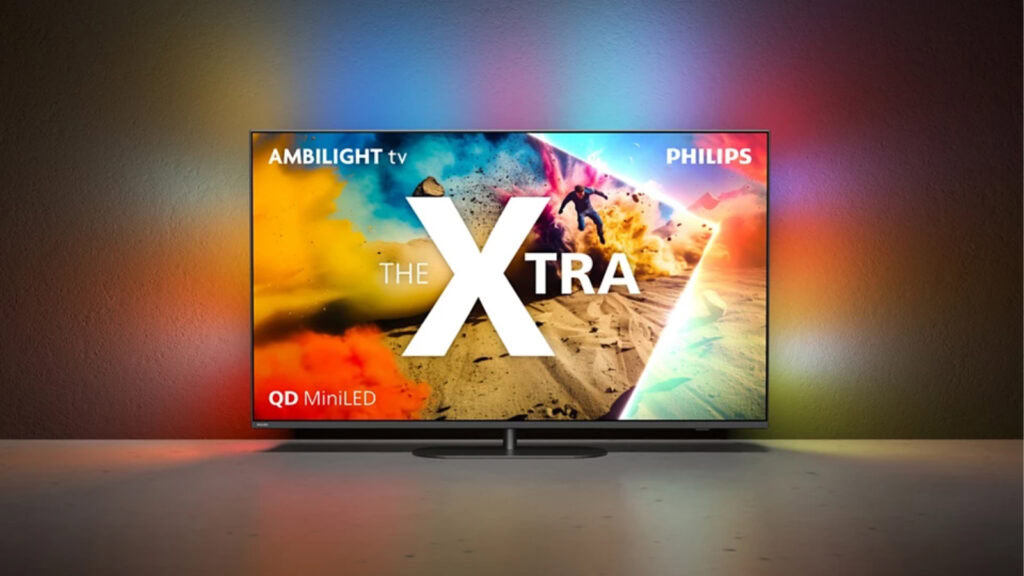
Credit: Philips
The MLED950 represents Philips’ flagship Mini-LED offering. This series employs quantum dot enhancement layer combined with mini-LED backlighting and 192 dimming zones. The approach aims to rival OLED contrast while maintaining higher peak brightness levels. Limited to 65 and 75-inch sizes, it targets buyers seeking large-screen performance without OLED pricing. The Ambilight Plus system with dome-shaped lenses attempts to create more precise ambient lighting effects.
Major Specifications
| Specification | Details |
|---|---|
| Processor / Chipset | P5 Gen 7 AI with Adaptive Intelligence and AI Adaptive Gamut Enhancer |
| Operating System | Titan OS 2025 |
| Display | 65″, 75″ – 4K Quantum Dot Mini-LED with 192 dimming zones |
| Refresh Rate | 144Hz |
| HDR Support | HDR10, HDR10+ Adaptive, Dolby Vision, HLG (1200 nits peak brightness, 98% DCI-P3 coverage) |
| Audio | 60W 4.1 channel with down-firing and side-firing drivers, rear subwoofer, Dolby Atmos, DTS:X, AI EQ, Clear Dialogue |
| Ports | 4x HDMI 2.1 (full bandwidth 48-144Hz), 2x USB, Ethernet, Optical out, Subwoofer out |
| Connectivity | Wi-Fi, Bluetooth, Chromecast, AirPlay 2 |
| Smart Features | Titan OS, voice assistants, extensive app support, Moments app |
| Gaming Features | FreeSync Premium Pro, VRR, ALLM, Game Bar 2.0, cloud gaming services |
User Type Recommendation: Who Should Buy It?
| User Type | Is This Smart TV a Good Fit? | Why? |
|---|---|---|
| Movie & Series Lovers | ✅ | High peak brightness, wide color gamut, improved contrast |
| Gamers | ✅ | 144Hz native refresh, four HDMI 2.1 ports, low input lag |
| Families & Home Users | ✅ | Large screens, robust audio, immersive Ambilight Plus |
| Sports Fans | ✅ | High brightness in bright rooms, 144Hz tracks fast motion |
| Tech Enthusiasts | ✅ | Mini-LED with 192 zones, quantum dots, Ambilight Plus |
Quick Pros & Cons Table
| Pros | Cons |
|---|---|
| ✅ 1200 nits peak brightness impressive for Mini-LED | ❌ 192 dimming zones fewer than some competitors |
| ✅ Ambilight Plus with dome-shaped lenses | ❌ Only available in two sizes (65″, 75″) |
| ✅ 144Hz native refresh rate benefits gaming | ❌ Cannot match OLED’s infinite contrast ratio |
| ✅ Four HDMI 2.1 ports with full bandwidth | ❌ Launches later (September) than other models |
4. Philips Smart TVs: Philips OLED810 — Mid-Range OLED with Advanced Processing

Credit: Philips
The OLED810 occupies the middle ground in Philips’ OLED range. This model pairs LG Display’s OLED EX panels with the company’s latest 9th-generation P5 processor. The combination aims to deliver refined picture quality at a price point below flagship models. Available in five sizes from 42 to 77 inches, it accommodates diverse room sizes and viewing preferences. The inclusion of three-sided Ambilight and Google TV positions it as a direct alternative to LG’s C-series.
Major Specifications
| Specification | Details |
|---|---|
| Processor / Chipset | P5 Gen 9 AI (MediaTek Pentonic 1000 MT9972, quad-core Cortex-A73 2GHz CPU, Mali-G57 800MHz GPU) |
| Operating System | Google TV (Android 14) |
| Display | 42″, 48″, 55″, 65″, 77″ – 4K OLED EX panel |
| Refresh Rate | 120Hz native, VRR support up to 144Hz |
| HDR Support | HDR10, HDR10+ Adaptive, Dolby Vision, HLG (1500 nits peak for 55″+ models, 1000 nits for 42″/48″) |
| Audio | 70W 2.1 channel (50W for 42″ model) with Dolby Atmos, DTS:X, DTS-HD MA, Intellisound AI |
| Ports | 2x HDMI 2.1 (48Gbps), 2x HDMI 2.0, 2x USB, Ethernet (100Mbps), Optical out, Headphone jack, Subwoofer out, CI+ slot |
| Connectivity | Wi-Fi, Bluetooth, Google Chromecast built-in, AirPlay 2 |
| Smart Features | Google TV with extensive app ecosystem, Google Assistant, personalized recommendations, Matter smart home integration |
| Gaming Features | AMD FreeSync, Nvidia G-Sync Compatible, VRR, ALLM, Game Bar with auto-detection, minimap zoom, color helper |
User Type Recommendation: Who Should Buy It?
| User Type | Is This Smart TV a Good Fit? | Why? |
|---|---|---|
| Movie & Series Lovers | ✅ | Perfect blacks, P5 Gen 9 processor, Dolby Vision |
| Gamers | ✅ | VRR up to 144Hz, dual HDMI 2.1 ports, Game Bar auto-detection |
| Families & Home Users | ✅ | Familiar Google TV, wide app selection, multiple sizes |
| Sports Fans | ✅ | Fast OLED response, 120Hz refresh, good motion processing |
| Tech Enthusiasts | ✅ | Latest P5 Gen 9 processor, OLED EX panel, Matter compatibility |
Quick Pros & Cons Table
| Pros | Cons |
|---|---|
| ✅ P5 Gen 9 processor provides advanced processing | ❌ Only two HDMI 2.1 ports limits multi-device connectivity |
| ✅ Google TV offers mature app ecosystem | ❌ Three-sided Ambilight instead of four-sided |
| ✅ OLED EX panel brighter than previous generation | ❌ 100Mbps Ethernet slower than gigabit standard |
| ✅ Five size options accommodate various spaces | ❌ Peak brightness lower than tandem OLED panels |
5. Philips Smart TVs: Philips OLED+910 — Premium OLED with Bowers & Wilkins Audio
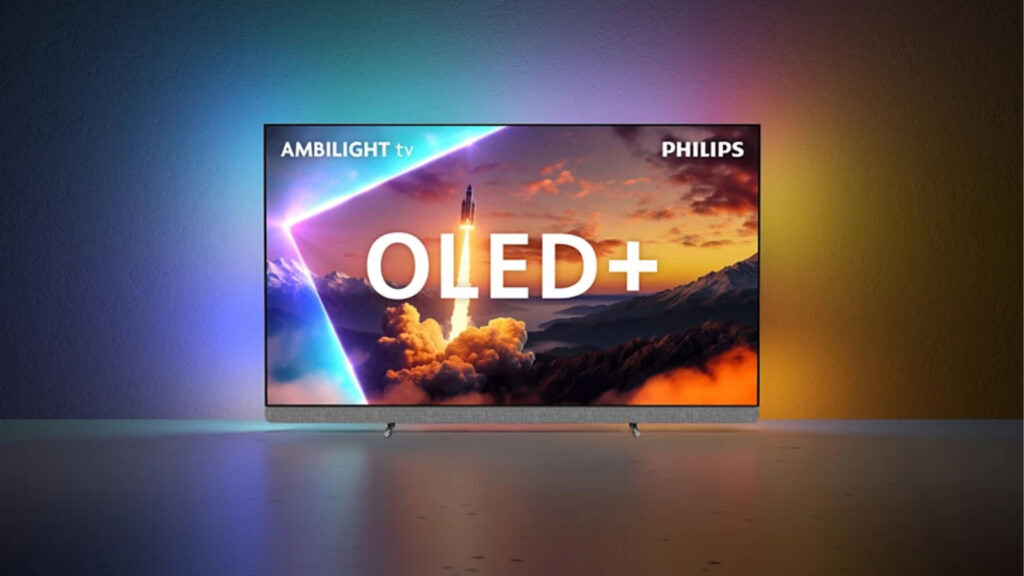
Credit: Philips
The OLED+910 combines cutting-edge display technology with audiophile-grade sound. This model features the same four-stack Primary RGB Tandem OLED panel as the flagship but differentiates itself through integrated Bowers & Wilkins audio. The 3.1 channel system includes dedicated mid-range drivers, a titanium dome tweeter, and a rear subwoofer. Available in three sizes, it targets buyers who value audio quality but may not have space or budget for separate sound systems.
Major Specifications
| Specification | Details |
|---|---|
| Processor / Chipset | P5 Gen 9 AI (MediaTek Pentonic 1000 MT9972) |
| Operating System | Google TV (Android 14) |
| Display | 55″, 65″, 77″ – 4K Primary RGB Tandem OLED with META 3.0 technology |
| Refresh Rate | 120Hz native, VRR support up to 144Hz |
| HDR Support | HDR10, HDR10+ Adaptive, Dolby Vision, HLG (3700 nits peak brightness, 350 nits full-screen, 99.5% DCI-P3, 83% BT.2020) |
| Audio | Bowers & Wilkins 81W 3.1 channel system: 2x 30x50mm mid-range drivers per channel, 19mm titanium dome tweeters with Nautilus tubes, 75mm rear subwoofer with 4 passive radiators, 8 channels amplification, Dolby Atmos, DTS:X |
| Ports | 2x HDMI 2.1 (48Gbps), 2x HDMI 2.0, 2x USB, Ethernet, Optical out, Subwoofer out, 3.5mm headphone jack, CI+ slot |
| Connectivity | Wi-Fi, Bluetooth, Google Chromecast, AirPlay 2 |
| Smart Features | Google TV, Google Assistant, extensive app selection, personalized content discovery |
| Gaming Features | VRR up to 144Hz, AMD FreeSync Premium, Nvidia G-Sync Compatible, ALLM, Game Bar with auto-detection, color helper |
User Type Recommendation: Who Should Buy It?
| User Type | Is This Smart TV a Good Fit? | Why? |
|---|---|---|
| Movie & Series Lovers | ✅ | Tandem OLED exceptional HDR, cinema-quality Bowers & Wilkins audio |
| Gamers | ✅ | 144Hz VRR, low input lag, Game Bar auto-detection |
| Families & Home Users | ✅ | Premium all-in-one solution, eliminates soundbar need |
| Sports Fans | ✅ | Fast OLED response, Bowers & Wilkins brings stadium atmosphere |
| Tech Enthusiasts | ✅ | Latest tandem OLED, premium audio, four-sided Ambilight |
Quick Pros & Cons Table
| Pros | Cons |
|---|---|
| ✅ Bowers & Wilkins 3.1 audio system exceptional | ❌ Price premium over similar TVs without branded audio |
| ✅ Primary RGB Tandem OLED panel technology | ❌ Only two HDMI 2.1 ports may limit connectivity |
| ✅ 3700 nits peak brightness class-leading | ❌ Not available in smaller than 55-inch size |
| ✅ Four-sided Ambilight creates full immersion | ❌ Releases later (June) than entry models |
6. Philips Smart TVs: Philips OLED+950 — Flagship OLED Smart TVs with Dual-Engine Processing
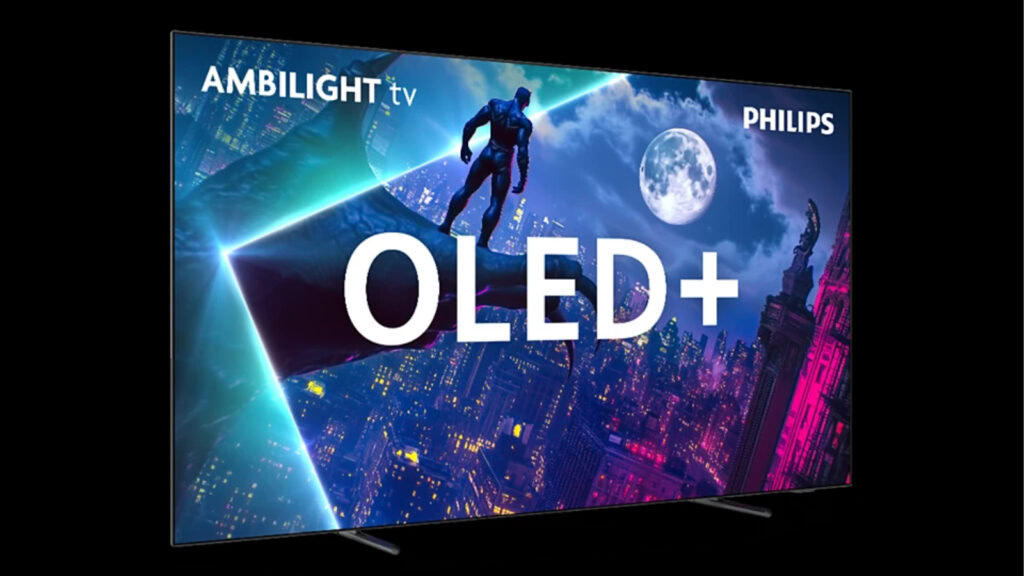
Credit: Philips
The OLED+950 represents Philips’ vision of reference-quality television. This flagship model employs a dual-chip version of the P5 Gen 9 processor, unique in the lineup. The processing power enables more sophisticated picture refinement algorithms. Paired with the same tandem OLED panel as the OLED+910, it prioritizes picture quality over integrated premium audio. The four-sided Ambilight implementation creates ambient lighting on all edges. Available in 65 and 77-inch configurations, it targets enthusiasts with dedicated audio systems.
Major Specifications
| Specification | Details |
|---|---|
| Processor / Chipset | P5 AI Dual Engine Gen 9 (dual-chip MediaTek Pentonic 1000) |
| Operating System | Google TV (Android 14) |
| Display | 65″, 77″ – 4K Primary RGB Tandem OLED with META 3.0 technology |
| Refresh Rate | 120Hz native, VRR support up to 144Hz |
| HDR Support | HDR10, HDR10+ Adaptive, Dolby Vision, HLG (3700 nits peak brightness, 350 nits full-screen, 99.5% DCI-P3, 83% BT.2020, ultra-low reflection filter blocks 99% of glare) |
| Audio | 70W 2.1 channel with accurate digital crossover, two-way left/right speakers, triple-ring rear-facing bass driver with 4 passive radiators, Dolby Atmos, DTS:X, AI EQ, Clear Dialogue |
| Ports | 2x HDMI 2.1 (48Gbps), 2x HDMI 2.0, 2x USB, Ethernet, Optical out, Subwoofer out, 3.5mm headphone jack, CI+ slot |
| Connectivity | Wi-Fi, Bluetooth, Google Chromecast, AirPlay 2 |
| Smart Features | Google TV with comprehensive app ecosystem, Google Assistant, AI content recognition, Matter smart home support |
| Gaming Features | VRR up to 144Hz, AMD FreeSync Premium, Nvidia G-Sync Compatible, ALLM, Game Bar with auto-detection, minimap zoom feature exclusive to this model |
User Type Recommendation: Who Should Buy It?
| User Type | Is This Smart TV a Good Fit? | Why? |
|---|---|---|
| Movie & Series Lovers | ✅ | Dual-engine processing, tandem OLED, ultra-low reflection filter |
| Gamers | ✅ | Exclusive minimap zoom, 144Hz VRR, auto-detection game profiles |
| Families & Home Users | ⚠️ | Premium pricing high for casual viewing, exceptional for movie nights |
| Sports Fans | ✅ | Ultra-fast OLED response, dual-engine handles fast motion exceptionally |
| Tech Enthusiasts | ✅ | Flagship specification, dual P5 Gen 9 chips, latest tandem OLED |
Quick Pros & Cons Table
| Pros | Cons |
|---|---|
| ✅ Unique dual-engine P5 Gen 9 processor | ❌ Premium pricing positions it against LG G5, Samsung QD-OLED flagships |
| ✅ Tandem OLED panel delivers 3700 nits peak | ❌ Only available in two large sizes (65″, 77″) |
| ✅ Four-sided Ambilight complete immersion | ❌ Built-in audio less impressive than OLED+910’s Bowers & Wilkins system |
| ✅ Exclusive minimap zoom gaming feature | ❌ Later release date (September) than mid-range models |
Comparison Table for Top 6 Philips Smart TVs
Philips Smart TVs: Side-by-Side Comparison
| Philips Smart TVs | Display Type & Size | Resolution & HDR Support |
|---|---|---|
| PUS9000 “The One” QLED | 43″-85″ 4K QLED with Quantum Dots | 4K, HDR10, HDR10+, HLG |
| OLED760 | 48″-77″ 4K OLED EX | 4K, 1000 nits peak, Dolby Vision, HDR10, HLG |
| MLED950 Mini-LED | 65″, 75″ 4K QD Mini-LED (192 zones) | 4K, 1200 nits peak, 98% DCI-P3, Dolby Vision, HDR10+ |
| OLED810 | 42″-77″ 4K OLED EX | 4K, 1500 nits peak (55″+), Dolby Vision, HDR10+, HLG |
| OLED+910 | 55″-77″ 4K Primary RGB Tandem OLED | 4K, 3700 nits peak, 99.5% DCI-P3, Dolby Vision |
| OLED+950 | 65″, 77″ 4K Primary RGB Tandem OLED | 4K, 3700 nits peak, 99.5% DCI-P3, 83% BT.2020 |
Your Perfect Choice Among These 6 Philips Smart TVs

Credit: iken3
Philips Smart TVs carry a design philosophy that extends beyond the screen edges. The Ambilight technology, whether three-sided or four-sided, creates a visual envelope that changes how rooms feel during viewing. The brand’s partnership with LG Display for OLED panels and its own P5 processing architecture combines external expertise with internal refinement. Each model reviewed here offers distinct value propositions rather than incremental differences.
The quantum dot layer in the PUS9000 brings color saturation improvements without OLED’s price premium. The OLED760 delivers the format’s signature contrast at an accessible entry point. The MLED950 Mini-LED demonstrates that backlit displays can approach OLED-like shadow detail through zone dimming and quantum enhancement. The OLED810 balances the latest processing with proven panel technology. The OLED+910 proves that integrated premium audio can eliminate soundbar purchases. The OLED+950 pushes processing power further with a dual-chip architecture aimed at reference-quality reproduction.
Selecting among these smart TVs depends less on finding the single best television and more on matching capabilities to actual viewing habits. Someone streaming documentaries in a dim basement has different needs than a family watching sports in a bright living room. A gamer prioritizing response time evaluates specifications differently from a film enthusiast focused on color accuracy. Budget constraints shape decisions, but so does available space and existing equipment. The right choice serves quietly for years, blending into routines until its quality becomes invisible through familiarity.

